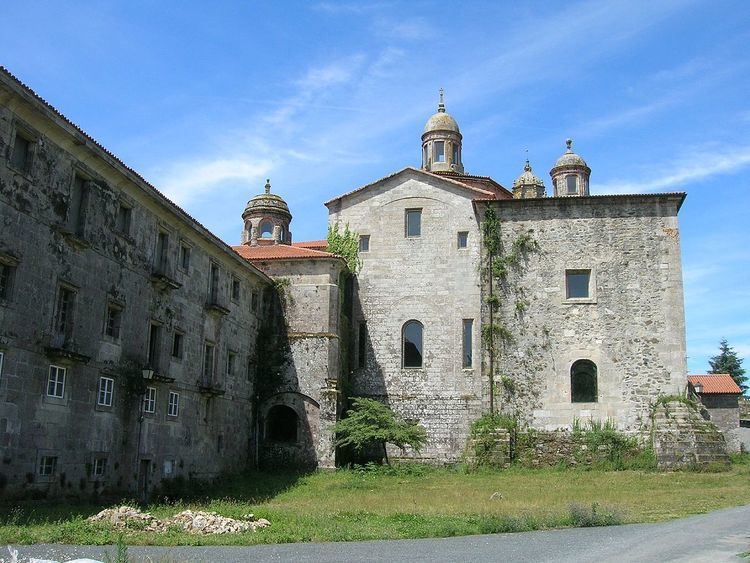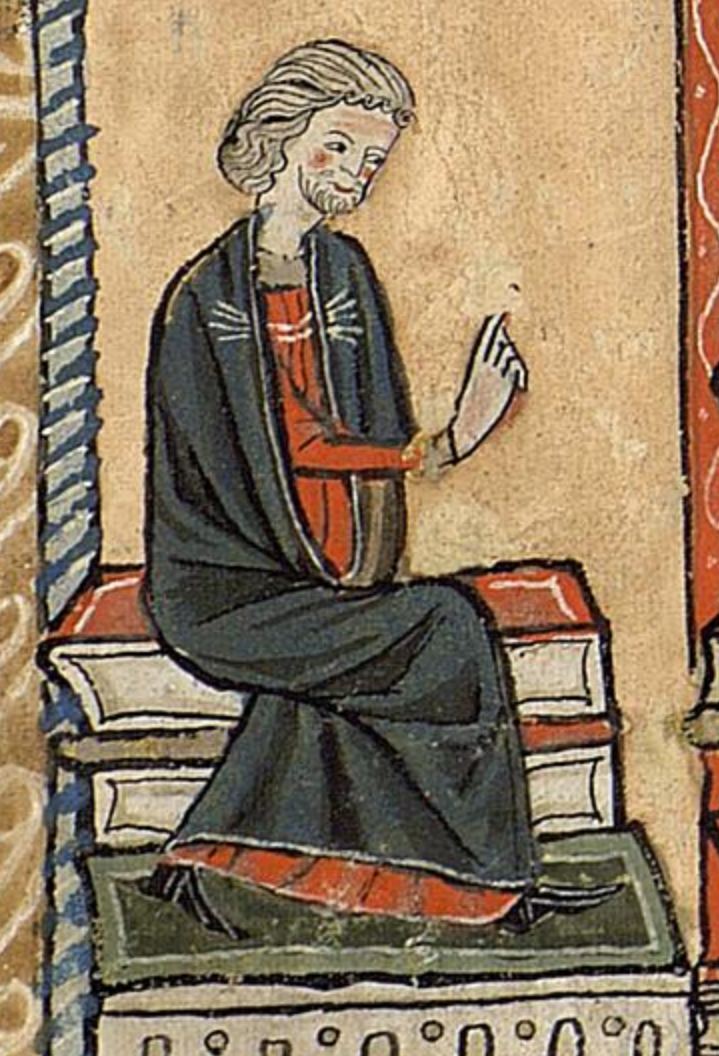Noble family House of Traba Name Bermudo de Died 1168 | Mother Urraca Froilaz Father Pedro Froilaz de Traba | |
 | ||
Spouse(s) Teresa BermudezAdosinda GonzalezUrraca Henriques Buried Monastery of Sobrado dos Monges, Galicia | ||
Bermudo Pérez de Traba (died 1168), the eldest son of Count Pedro Fróilaz de Traba and his first wife Urraca Fróilaz, was a member of the most important medieval lineage in Galicia. He governed as a tenente Trastámara, Faro (A Coruña), Viseu, and Seia, owned vast estates in his native land, and was a generous patron of religious institutions.
Contents
Biographical sketch

Bermudo was never honored with the title of count, although he was an important magnate and appears in charters signing as dominus (Latin for "lord") and also as Vermudo Petriz Galleciae ("Bermudo Pérez of Galicia"). His presence in medieval documentation is first recorded on 1 April 1104 when, with his brother, Count Fernando Pérez de Traba, he made a donation to the Monastery de San Xoán de Caaveiro. He was a vassal of Queen Urraca of León and, with his brothers, swore his loyalty to her son Alfonso VII upon his ascension to the throne of the Kingdom of León in Zamora.

On 29 July 1118, Queen Urraca, with the consent of her son Alfonso, returned to Bermudo and to his brother Fernando the territories belonging to the monastery at Sobrado which King Ferdinand I had taken by force in 1050. In gratitude Bermudo and Fernando made a gift of a hound named Ulgar and a hunting spear to Alfonso VII. A few years later, on 25 July 1122, he granted his wife Urraca several properties, including the estates in Las Cascas plus another three villages and two monasteries.

Two years later, in 1125, he appears in Portugal confirming a donation made by Countess Theresa, as lord or governor of Viseu while his brother appears as the governor of Coimbra.
After the death of Theresa, Countess of Portugal, on 11 November 1130, he participated in the uprising from his castle in Seia, although his brother-in-law, King Afonso Henriques, forced him to desist and Bermudo returned to Galicia, rarely crossing the Miño River thereafter.
On 9 October 1138, he rebuilt the Monastery of Genrozo, later known as Nuestra Señora de las Dueñas, and finally as Las Cascas. It was most probably founded by Froila Bermúdez, Bermudo's grandfather. He had inherited half of the monastery from his father, Pedro Fróilaz, and King Alfonso VII, who had been raised with Bermudo since Pedro had been his tutor, returned the other half of the monastery which Pedro Fróilaz had given him, so that Bermudo would have the entire property. He gave the monastery to his daughter Urraca (the elder) who entered the convent as a nun and later became its abbess. On 8 September 1145, Urraca, with the consent of her father, donated it to the Monastery of Sobrado. The monastery, now in ruins with only the church of San Pelayo de Genrozo standing, was situated in the territory of Nendos, in a small village known as Las Cascas, close to the city of Betanzos.
According to the Chronicon Lusitanum, a Portuguese source, Bermudo was one of the nobles taken as a captive after the Battle of Valdevez in 1140.
He and his brother Fernando made many donations to the monastery at Sobrado, which had been founded by their ancestors, and owned all its estates over a period of 24 years, from 1118 until 11 January 1142 when they voluntarily handed it over to the Cistercian monks.
He went twice on pilgrimages to the Holy Land; the first time in 1147 with his brother Fernando and cousin Menendo Rodríguez returning to Galicia in 1148. He went again on his own in 1153 and was back in Galicia the next year as attested in a document recording the sale made by Adosinda Rodríguez of a property in Sobrado on 24 April 1155 which is dated, ipso anno presente, quando domnus Vermudis reversus est Hierosalime (when Don Bermudo was back from Jerusalem).
In 1148, he entrusted the abbot at the Benedictine monastery of Toxos Outos with the construction of a convent in Nogueirosa, one of the estates that he had given his wife Urraca as part of her wedding tokens on 25 July 1122. Years later, in 1150, Urraca made a donation of several properties to the newly founded establishment under the condition that she and four female relatives were to be accepted as members of the religious community of this convent which was called Santa María de Nogueirosa. In December 1156 he made his last recorded visit to the royal court at Palencia.
On 6 August 1160, Bermudo retired as a Cistercian monk at the Monastery of Sobrado dos Monges. On 21 September 1161, Bermudo settled a dispute he had with the monks of Toxos Outos. In this charter he describes himself as "moved by divine inspiration" ("diuina inspiratione conmotus") to become a monk. He died in 1168 when he was approximately 80 years old and was buried at the abbey. At about the same time as her husband became a monk at Sobrado, Urraca entered the convent founded by her husband in Nogueirosa, a parish near Pontedeume, and died in 1173, receiving burial at the church in the convent.
Marriage and issue
He married on more than one occasion, as he himself declares in a document dated 9 October 1138 when he made a donation to his daughter Urraca, a nun and later abbess at the Monastery of Cascas.
He had three children from one of his first wives, Teresa Bermúdez:
He was also apparently married to Adosinda González with whom he had two daughters:
He married, around July 1122, Urraca Henriques (Enríquez), daughter of Henry, Count of Portugal and his wife, Theresa of León. The offspring of this marriage were:
